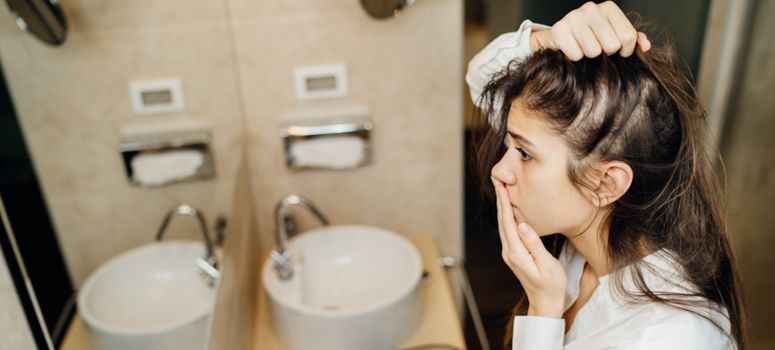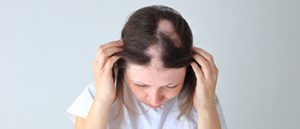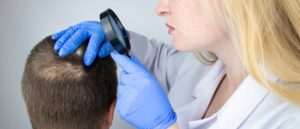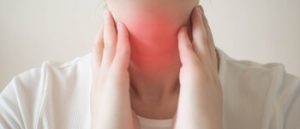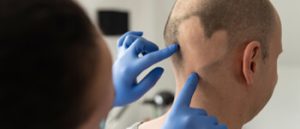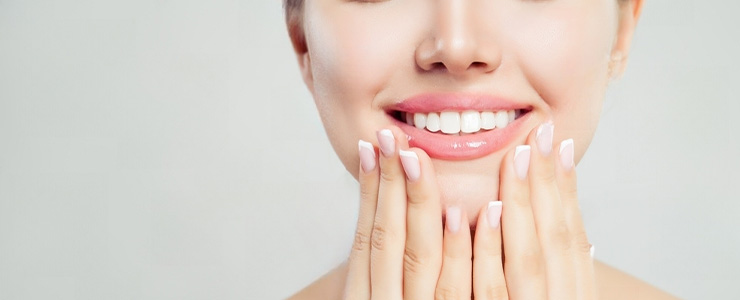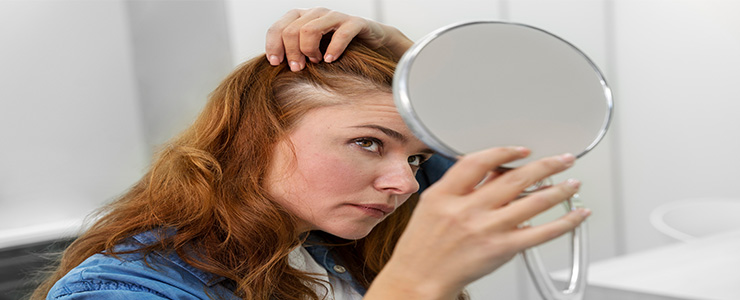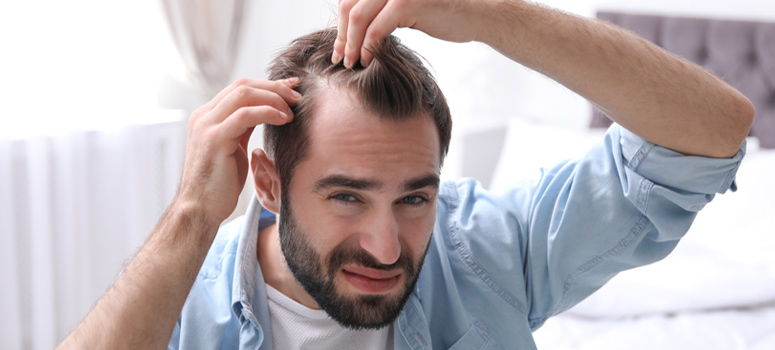Alopecia areata causes loss of hair, leading to the formation of bald patches. One experiences an abrupt shedding of hair follicles, forming circular patches on the scalp.
Loss of body hair is a natural phenomenon. Alopecia patients experience more hair fall than hair regeneration. The condition causes bald patches in the scalp, leading to complete baldness in later years.
Alopecia is not limited to the scalp alone. Eyebrows and eyelashes, facial hair (for men), pubic hair, and body hair are affected over the years as well.
Types of Alopecia Areata
The types of alopecia include:
- Alopecia Totalis:It leads to baldness and complete loss of hair from the scalp.
- Alopecia Universalis:In this condition, the patient experiences loss of all body hair.
- Persistent Alopecia:This condition is characterized by loss of hair limited to a part in the form of patches. It doesn’t spread, unlike Totalis or Universalis)
- Scattered Alopecia:It is also known as diffused alopecia. In this type, marked thinning of hair follicles occurs without persistent hair loss.
- Ophiasis Alopecia:It causes hair loss from the temporal (temple-region) and occipital (back of the head) lobe.
What Leads to Alopecia Areata?
In Latin, Alopecia means “loss of hair”, and Areata means “presence of patches”. The sudden hair loss happens due to an auto-immune reaction where hair follicles are attacked indiscriminately. Alopecia areata begins as an isolated patch of missing hair that gradually grows in size, spreading all over the body.
Treating Alopecia Areata
Alopecia treatment aims at reducing hair loss to the extent where natural hair growth will replenish the hair fall. The auto-immune reaction triggers hair fall but doesn’t inhibit hair growth. Both topical and natural remedies can help you arrest alopecia.
Topical Treatment for Alopecia Areata
Your dermatologist shall prescribe you drugs that need to be applied accordingly on the infected area. Here are some commonly prescribed medications:
- Clobetasol Propionate is an OTC drug available as ointment and lotion. It reduces skin inflammation.
- Minoxidil is an OTC drug that’s applied over the affected area.
- Steroidal treatment through injection helps suppress immune reactions to arrest hair loss.
- Anthralin and Diphencyprone are used to generate new hair follicles through allergic responses.
Note that you should only use these medications if instructed by your dermatologist. Self-medication has to be avoided at all costs.
Oral Treatment for Alopecia Areata
Besides topical treatment, alopecia patients take these oral medications to treat underlying infections:
- Antibiotics treat bacterial presence within the body.
- Cortisone medications help suppress allergic responses.
- Immuno-suppressant drugs prevent the immunological system from attacking the hair follicles.
- Treating for comorbidities (heart, kidney, blood pressure, diabetes).
- Psoralens and UV therapy (application of UV-rays to treat the site of infection).
Alopecia – Early Signs and Symptoms
Alopecia causes no physical discomfort, and in fact, often gets mistaken for poor hair management. Thus, you should keep an eye out for some early signs to prevent the condition from worsening.
Consult your dermatologist if you experience any of the following symptoms:
- Abrupt thinning of hair in less than a month or two (thinning of hair happens with age)
- Receding hairline (men) and thinning of hair ends (women)
- Hair loss from eyebrows, lashes, face, pubic region, and skin
- Rapid formation of patches on the scalp
- Inflammation, itching, and blister-like formation
- White spots on the nails
Who Is Prone to Contract Alopecia Areata?
Alopecia can occur in any person, given its auto-immune nature. People with the following conditions are more likely to experience symptoms of alopecia areata:
- Deficiency of vitamin D
- Genetic mutations
- Presence of alopecia in the family
- Cancer
- Allergic problems like hay fever and asthma
- Down Syndrome
- Thyroid problems and other hormonal conditions
- Eczema (atopic dermatitis)
- Other autoimmune disorders like rheumatoid arthritis or type-1 diabetes
Females are more prone to alopecia than males. While most alopecia patients are in their late 30s when diagnosed, teenagers and folks in their early 20s can show symptoms.
Diagnosing Alopecia Areata
Alopecia areata can be confused with usual hair problems leading to hair fall. Unlike fungal infections, dandruff, and medication side effects, alopecia does not cause discomfort except prolonged hair loss. A dermatologist will prescribe the following examinations to confirm alopecia;
- Biopsy of the suspected patch
- Haematological diagnosis
- C-r (reactive) P (protein) test
- Microscopic observation of the affected cell mass
- Hormonal test
- Antibody test to detect the presence of auto-immune conditions
Factors Triggering Alopecia Areata
Besides being an auto-immune condition, alopecia and its symptoms can become worse due to lifestyle factors. Here’s what you need to avoid if you have alopecia:
- Coffee
- Dairy products
- Alcohol/smoking habits
- An excessive rich diet of carbohydrates, fats, and spices
- Eating junk foods
- Poor hygiene and lifestyle
- Foods causing digestive problems
Living With Alopecia Areata
Alopecia areata is not curable, but that doesn’t stop hair from growing back. Some people have experienced regrowth of hair after the shedding phase is over. For others, the patches may stay for life without further deterioration.
Given that the condition can take a toll on one’s psychological well-being, it is advised to seek a mental health professional to deal with unprecedented hair loss and prevent your quality of life from decreasing.
Summary
Alopecia areata is a painless condition. There are no recorded instances of alopecia affecting body functions. No explainable causes of alopecia exist to date. An early diagnosis and preventive treatment help you manage hair loss. Alopecia is unique from scalp fungal infections due to the absence of any physical comfort.
If you are experiencing prolonged hair loss, book a consultation to get treated for the same.
Disclaimer:This article seeks to inform about the condition only. If you suffer from the mentioned symptoms, please seek clinical consultation.

